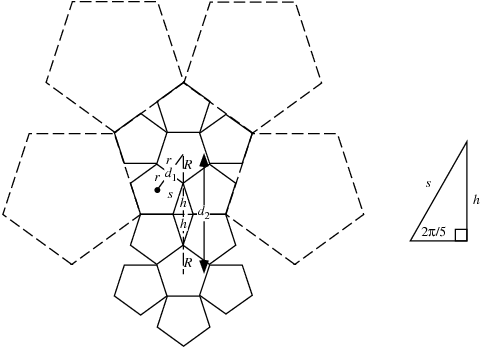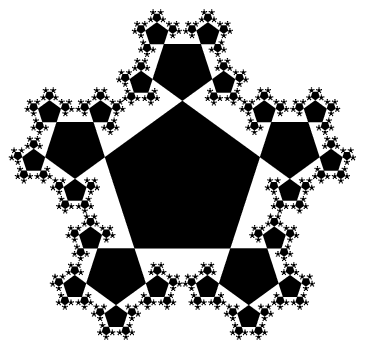Pentaflake A fractal with 5-fold symmetry. As illustrated above, five pentagons can be arranged around an identical pentagon to form the first iteration of the pentaflake. This cluster of six pentagons has the shape of a pentagon with five triangular wedges removed. This construction was first noticed by Albrecht Dürer (Dixon 1991).  For a pentagon of side length 1, the first ring of pentagons has centers at radius
where
and these are related to the side length
The height
giving a radius of the second ring as
Continuing, the
Now, the length of the side of the first pentagon compound is given by
so the ratio of side lengths of the original pentagon to that of the compound is
We can now calculate the dimension of the pentaflake fractal. Let
The capacity dimension is therefore
(Sloane's A113212).  An attractive variation obtained by recursive construction of pentagons is illustrated above (Aigner et al. 1991; Zeitler 2002; Trott 2004, pp. 21-22). |
